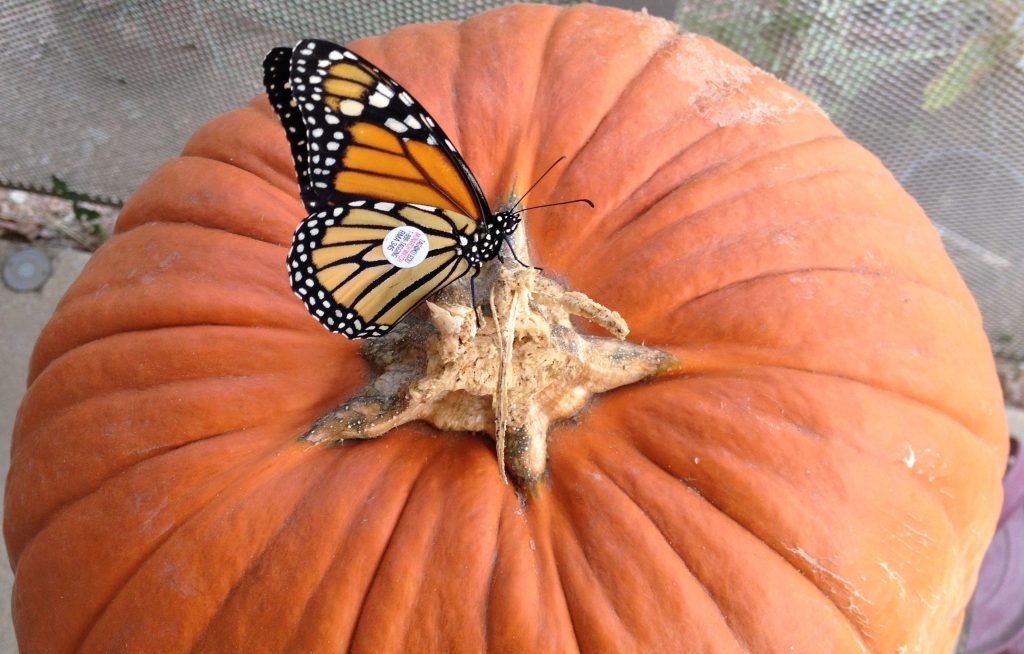A late Monarch butterfly season comes to a close this month in what may be the worst year, numbers wise, in the history of the migration. The storied insects arrived at El Rosario sanctuary in Michoacán, Mexico, last week, “thousands of them,” according to Journey North, a nonprofit organization that engages students and citizen scientists around the globe in tracking wildlife migration and seasonal change.

Monarch butterfly season comes to a close in what may be the worst year, numbers wise in history.
The insects endured a rollercoaster ride in 2012. The year began in the hangover of an historic Texas drought. A wet, mild winter and a banner wildflower season followed in the spring. The drought moved to the Midwest in the summer, crippling the Monarchs’ milkweed breeding grounds and stifling the growth of summer blooms for nectar. By fall, storms hit the East Coast and aerial insecticides filled North Texas skies in an attempt to control West Nile virus-carrying mosquitoes–just as Monarchs were set to move through the “Texas funnel” en route to their ancestral roosts in Mexico later in the season. Dr. Chip Taylor, founder of Monarch Watch, aptly categorized 2012 as “a year like no other.”
And yet as we gather our tagging data to send to Monarch Watch by the December 1 deadline in a year of seemingly record low numbers, Monarch butterfly awareness seems to be enjoying an all-time high.

A Butterfly Haven somewhere in Michoacán –Photo courtesy SK Films
In October, the IMAX 3-D film “Flight of the Butterflies” opened with a soiree at the Smithsonian Institute in Washington, D.C. The $12 million Monarch butterfly natural history epic drew the “flutterati”–my word for the Monarch scientist celebrity pack–from across the hemisphere. Dr. Chip Taylor, Dr. Karen Oberhauser, Dr. Lincoln Brower joined forest restoration patrons, citizen scientists and others along with Mexican President Felipe Calderon to attend the premiere. Mainstream awareness of the history and plight of the migrating insects made international news.
On November 5, the savvy PR folks at Southwest Airlines agreed to fly a Monarch butterfly and “the Butterfly lady” Maraleen Manos-Jones, author of the Spirit of the Butterflies, from Albany, New York, to San Antonio, Texas. The Dallas-based airline sent a Southwest Airlines escort to meet Ms. Manos-Jones and her precious cargo from New

Monarch butterflies made front page news when Southwest Airlines flew a late season Monarch from Albany to San Antonio
York to the Lone Star State. Upon arrival, a Southwest Airlines video crew met the butterfly and its entourage, documenting the event for future use and generating more international media buzz. The AP picked up the story, NPR ran a segment, and the New York Times, Wall Street Journal and other media outlets labeled the story “a talker” as local TV stations covered the spectacle.
The butterfly was released at the San Antonio Botanical Garden on a warm Fall afternoon, as dozens of butterflies fluttered around milkweed and other late season blooms. Presumeably, the well-traveled insect joined its butterfly brethren for the trip south to Michoacán.
 Then, on November 18, scientist-turned-eloquent-author Barbara Kingsolver released her latest book, “Flight Behavior.” The novel uses the Monarch butterfly migration to tackle the complex subject of climate change. When asked why she used Monarch butterflies to make the wonky topic understandable, Kingsolver responded: “The more I studied it, the more I realized this was a perfect vehicle for what I wanted to say.”
Then, on November 18, scientist-turned-eloquent-author Barbara Kingsolver released her latest book, “Flight Behavior.” The novel uses the Monarch butterfly migration to tackle the complex subject of climate change. When asked why she used Monarch butterflies to make the wonky topic understandable, Kingsolver responded: “The more I studied it, the more I realized this was a perfect vehicle for what I wanted to say.”
Kingsolver is on to something. Monarch butterflies hold universal appeal. They don’t sting or bite. They are beautiful and accessible. They migrate across three countries, serving as a living metaphor for our innate interconnectedness.
In 1961, Chi-Chi, a giant panda with lots of fur and appealing, black-patched eyes arrived at the London Zoo. The cuddly, distinctive bear captured the imaginations of Londoners and quickly became the “poster species” of the World Wildlife Fund, which was founded the same year.
According to the WWF website, the first sketches were done by the British environmentalist and artist, Gerald Watterson. “We wanted an animal that is beautiful, is endangered, and one loved by many people in the world for its appealing qualities.”
Like the panda, Monarchs are a beloved species. Pandas are endangered, Monarchs are not, but many would argue that the Monarch migration is rushing toward a dangerous path of extinction.
Monarch butterflies’ range is moving north as temperatures rise. We see them later in the year, and further north, with each passing season. They also endure the climate changing extremes of heavy, unpredictable rain and storms (Storm Sandy this year), unexpected freezes, and persistent drought. They adapt, they adjust, and they tell us much about our changing climate and the abilities of other pollinators to adapt to these rapid changes–or not.
Recent media coverage and attention suggest Monarchs are on their way to becoming the “poster species” of climate change. We applaud this new awareness.

I enjoy your blogs posts very much, but especially enjoyed reading this one. I agree that there seems to be much more awareness about monarchs and their migration in recent years. I am sure organizations like the Monarch Teacher Network, books like Ms. Kingsolver’s and blogs such as yours are just a few reasons why people are becoming much more aware of the monarchs and the plight of their migration. Keep up the fantastic work that you do! I look forward to your next post.
Thanks for the kind words, Mary. Keep reading, and I’ll keep writing. Best wishes for the holiday. –Monika
Thanks for the well written article!
I’m from Massachusetts. I am awaiting my first Monarchs. Have plenty of milkweed growing in my yard. Hopefully this will be a good year for Monarchs. I collect the eggs, feed them and release butterflies when the time comes.